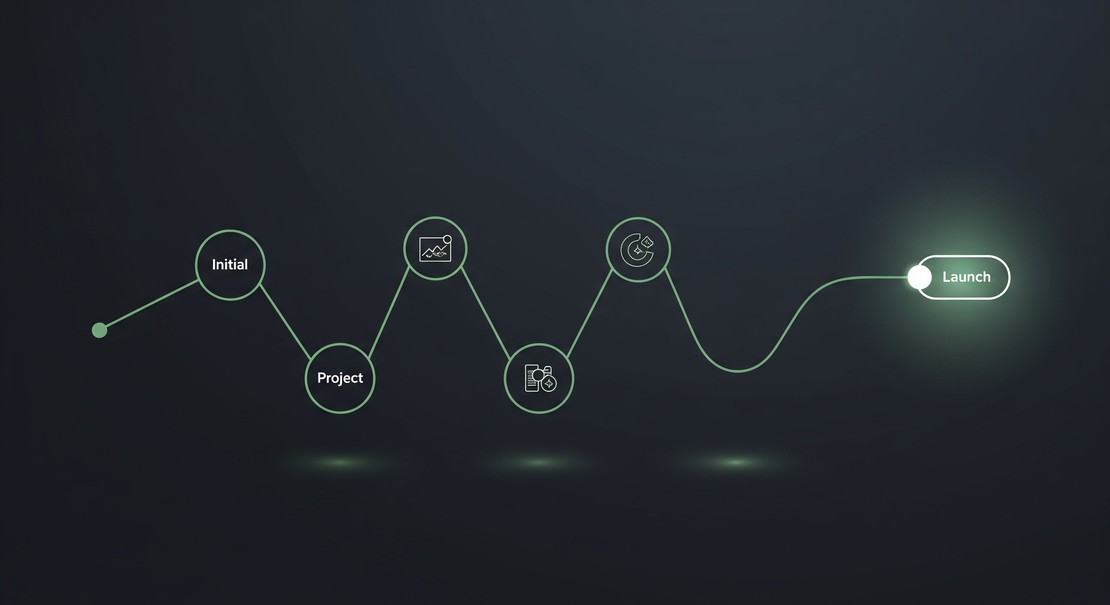Damyan is the founder of ScaleVector.io and a Fractional CTO with over 19 years of experience in technology leadership. His expertise …

From Zero to Launch: A CTO's Guide to Bootstrapping a Professional Online Presence
Table Of Contents
In today’s digital world, a professional online presence is non-negotiable, especially for a technology consultant. It’s your digital handshake, your portfolio, and your primary channel for building trust before a single word is spoken. But for many technical experts, the process of building that presence can feel daunting.
Where do you even begin?
In this post, I’m pulling back the curtain and sharing the exact, end-to-end blueprint I used to build the online foundation for my own consultancy, ScaleVector.io. This is a real-world case study of the strategic decisions and technical steps required to go from zero to a fully functional, professional online presence.
Phase 1: The Foundation - Brand & Identity
Before writing a single line of code, the foundation must be solid. This started with the core identity.
- The Name: I chose
ScaleVector.io. “Scale” speaks to the primary challenge of my clients, and “Vector” implies direction and precision. The.iodomain is modern and well-suited for a technology-focused business. - The Voice: A crucial early decision was whether to use “I” or “we”. As a solo consultant, authenticity is paramount. I chose to use “I” throughout my content to build a direct, personal connection with my clients. They are hiring me, Damyan, not an anonymous firm.
- The Logo: The logo needed to be simple, professional, and reflect the brand name. The final design incorporates a stylized ‘V’ with an upward arrow, symbolizing growth and a positive vector.
Phase 2: The Core Platform - The Website
With a brand identity in place, the next step was the website itself.
- The Technology: I chose the Hugo static site generator. In a world of complex content management systems, Hugo offers unparalleled performance, top-tier security (as there’s no database or server-side processing to hack), and low maintenance costs. It’s a choice that reflects my own engineering philosophy: build it clean, fast, and resilient.
- The Structure: I planned out the key pages every consultancy needs: a compelling Homepage, a detailed About Me page to build personal trust, a clear Services section (broken down into sub-pages), a Projects & Case Studies section to prove expertise, a Blog to share insights, and a Contact page.
- The Legal Necessities: I also added a Privacy Policy and Terms & Conditions page. While not exciting, these are foundational for any professional business.
Phase 3: The Business Toolkit - Essential Services
A website alone isn’t enough. It needs to be integrated with tools that create a professional client experience.
- Professional Email: I set up Google Workspace to have a professional email address (
[email protected]). - Client Scheduling: I integrated Calendly for my discovery calls. This wasn’t just about picking a time; I configured it with intake questions and automated email workflows to qualify leads and ensure our first conversation is as productive as possible.
- Analytics: I set up Google Analytics 4 to understand website traffic and Google Search Console to monitor my site’s health in search results.
Phase 4: The Technical Backbone - DNS & Deployment
This is where strategy meets execution.
- Deployment: I wired up my GitHub repository to Cloudflare Pages, which offers a world-class, free hosting and deployment platform for static sites. Every
git pushto my main branch automatically builds and deploys the site. - DNS & Domain: I connected my
scalevector.iodomain (from Namecheap) to Cloudflare by switching my nameservers to Cloudflare. This is a crucial best practice. It allowed me to solve the common issues of pointing a root domain to a deployment by using Cloudflare’s Redirect Rules to forward the apex domain (scalevector.io) to thewwwsubdomain, consolidating my brand’s online address for SEO, SSL certificate management and DNS propagation delays.
Phase 5: Building Credibility - Your Digital Footprint
Finally, the website needs to be part of a larger professional ecosystem.
- Social Presence: I crafted a professional bio and header for my Twitter profile to ensure brand consistency.
- Open Source: I set up both a personal and an organizational account on GitHub (
scalevector-io). This lays the groundwork for my strategy of building credibility through high-quality open-source contributions.
Conclusion: An Intentional Foundation
Building a professional online presence from scratch is a significant project, but it’s achievable with a structured, step-by-step approach. Every decision made—from the choice of brand voice to the technical details of DNS—was intentional and designed to build a resilient, professional, and trustworthy foundation for ScaleVector.io.
This strategic, hands-on process is exactly how I partner with my clients. If you’re facing your own technology challenges and need a clear path forward, let’s connect.